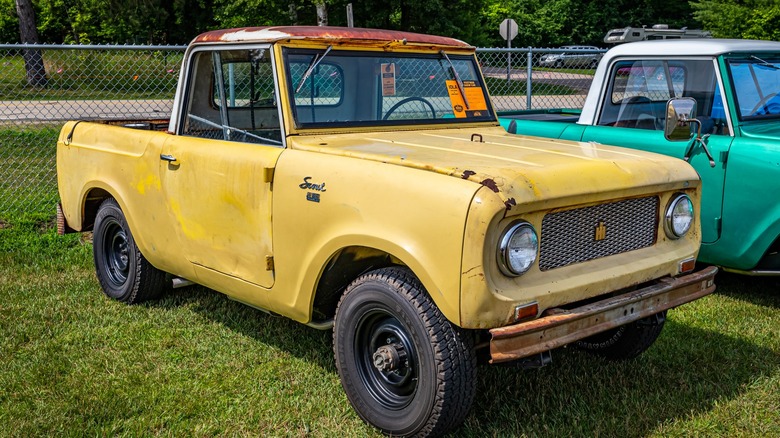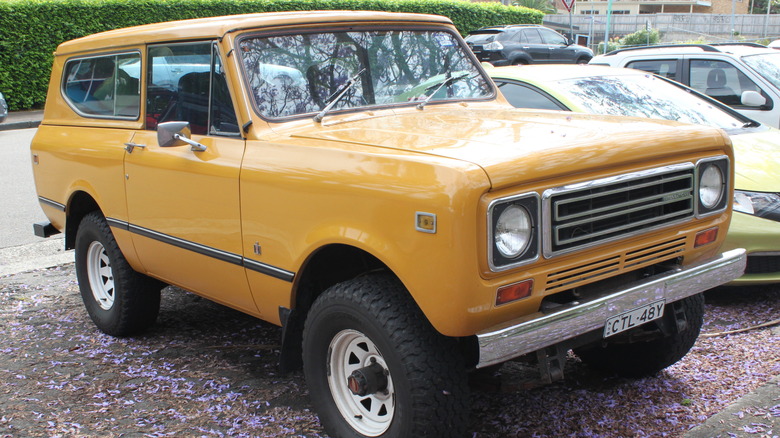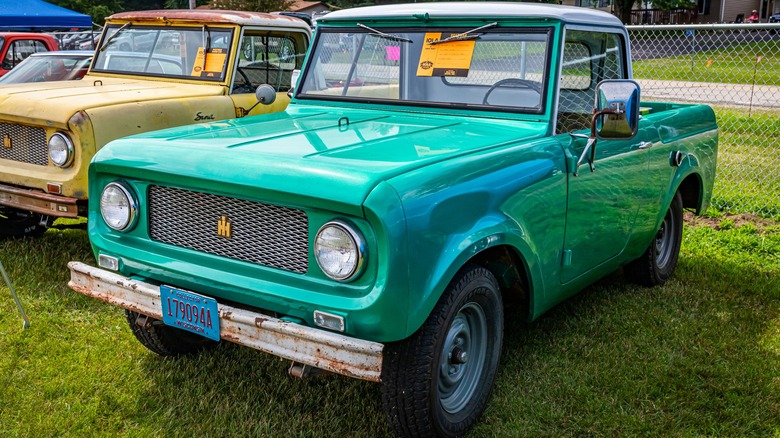Here's What Made The International Harvester Scout Special Enough To Be Resurrected Generations Later
The International Harvester Scout was born in the 1960s and immediately grew recognition as a force of nature in the off-road world. As more U.S. drivers wanted to get off the beaten path and explore, International decided to hit the market with a vehicle to take on the Willy's Jeep. It worked, too. Just five years into production, the company had managed to sell over 100,000 units of its rugged four-cylinder adventure companion. Over the years, the Scout grew to include a V8 and even a Nissan-sourced turbo diesel engine. Unfortunately, the original Scout went out of production after the 1980 model year.
However, Volkswagen announced that it would facilitate the return of the Scout name in the form of electric off-road vehicles under its own brand: Scout Motors. Likely, the Scout Motors concept will mirror the off-road lifestyle brand theming as Jeep. That only makes sense, considering the Scout's origin story. Likely, VW is looking to compete not only with the now iconic revival of the Ford Bronco but also with the off-road EV likes of Rivian and the Hummer EV lineup.
Frankly, we're excited about the return and think you should be, too. Bringing back the Scout name is, in turn, bringing back a true American automotive icon.
The Scout was arguably the first modern SUV
Upon its release for the 1961 model year, the classic International Harvester Scout 80 was advertised as a pickup truck that could easily transform into a station wagon by way of a removable hard top or soft top. However, it was the third option that truly made the Scout stand out. Moreover, it was that third option that set the gears in motion for all of the modern SUVs we've come to know and love over the years. That option was called the "travel top."
The Travel Top is similar to a camper shell or hard top you see on a pickup truck but with an added bit of the roofline that reaches the windshield and covers the front seat and steering wheel. More importantly, though, it also added a bench seat to the rear. It might seem like a simple addition, but it was a groundbreaking development that went on to change the automotive world as we know it. Though vehicles like the early Chevrolet Suburban, 1940s Jeep Station Wagon, and even the International Harvester Travelall had enclosed rears with a second-row seat, they were considered station wagons. The Scout is more akin to the legends that came after it like the Ford Bronco, Chevrolet Blazer, and Toyota 4Runner.
[Featured image by Jeremy via Wikimedia Commons | Cropped and scaled | CC BY 2.0]
Not as well-known as the giants, but still a staple
Of course, those legacy models in the Blazer, Bronco, and the immensely reliable Toyota 4Runner really took the torch and ran with it. They all became treasures of the trail and there's zero chance of attending any sort of off-road event without spying at least one of each. While the Scout walked so they could run, it did eventually fade into obscurity a bit.
That said, the International Harvester Scout is definitely iconic enough to warrant a return. After all, even if you disregard its historical significance in the development of the modern SUV, it's a fun, small off-road SUV with admirable retro styling and a friendly face. Its open-top nature is reminiscent of beach visits and camping adventures. It didn't need to be around for decades to become an icon. It's better to burn out at the top, as they say.
Volkswagen intends to keep the Scout as an American icon, too. The EV renditions will be built in the U.S. and, hopefully, will bring back some of that iconic styling just like Ford did with the Bronco.


